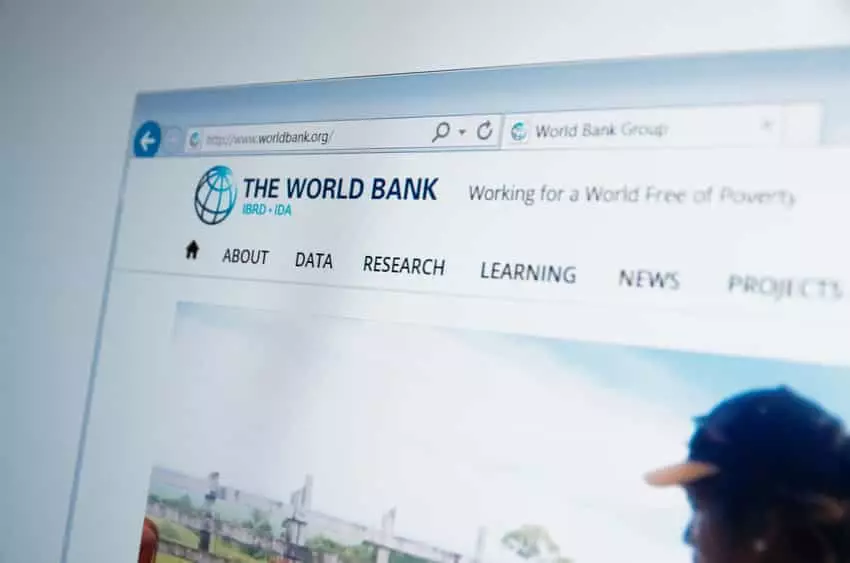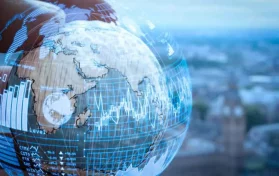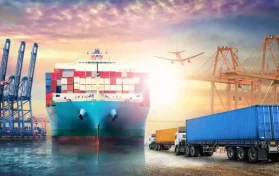
The World Bank is a financial organization that counts 189 countries as its members, with facilities in nearly 200 countries. It is made up of five institutions with one common mission:
- to promote shared prosperity
- to end extreme poverty
- to increase the incomes of the poorest in each country
- to reduce the number of people living in extreme poverty by at least three percent
The World Bank’s five institutions include:
- the Multilateral Investment Guarantee Agency or MIGA
- the International Bank for Reconstruction and Development or IBRD
- the International Centre for Settlement of Investment Disputes or ICSID
- the International Development Association or IDA
- the International Finance Corporation or IFC
The World Bank’s funding comes from wealthier countries in addition to bonds issued on the capital markets of the world. The World Bank is headquartered in Washington, D.C. There are at least ten thousand employees who work in the various World Bank offices throughout the world.
Today, the World Bank’s current president is David Malpass. There is a Board of Directors for each of the divisions of the World Bank.
The History of the World Bank
The World Bank was established in 1944 during the Betton Woods Conference. The World Bank was created through the Bretton Woods Agreement, which established the International Monetary Fund. At that time, the World Bank was called the International Bank for Reconstruction and Development. The original purpose of the World Bank was to provide loans to developing and low-income countries that could not otherwise procure loans. However, World War II was ending, so, at the time of the establishment of the World Bank, its chief responsibility was to help rebuild Europe in the aftermath of the Second World War.
Many of the loans made by the World Bank were to fund infrastructure, including highways and ports. The idea was that by providing funding for these types of projects, the countries could garner revenue with which to pay the temporary loans back.
Most of the loans made during the first thirty years of the World Bank’s existence were relatively small as far as the amount was concerned. Those countries seeking loans had to follow certain strict guidelines when filling out applications. France was the first country to receive a loan from the World Bank. The loan was in the amount of $250 million (which was not the full amount that was requested), and, in order to obtain the loan, France had to meet rigorous standards. The country had to maintain a balanced budget, as well as prioritize paying the World Bank loan back ahead of paying other debts. The United States requested that France remove any Communist party members from its government in order to receive the World Bank funding.
By the mid-70s and 1980s, the chief mission of the World Bank was to meet the needs of people living in developing countries. Loans were provided for other services aside of infrastructure, and the World Bank began to loan higher amounts of capital to countries.
The international monetary system that was established with the Bretton Woods Agreement was eliminated by President Richard Nixon of the United States.
What is the chief responsibility of the World Bank today?
The World Bank has multiple functions and responsibilities. First, the entity provides financial assistance – loans, grants, and zero-interest credits – to “qualifying governments” – these governments must be members of the World Banks and they must meet certain criteria.
The financial assistance provided by the World Bank assists in education, infrastructure, and healthcare, among other projects. The World Bank provides financial advice and technical assistance as well. This training may be provided to both public and private business entities.
Other Projects and Goals of the World Bank
The World Bank is involved in multiple projects worldwide. The World Bank has become instrumental in promoting improving the environment, including reducing ozone-depleting, climate changing chemicals by 2015.
The World Bank has also provided a great deal of capital for research regarding communicable diseases, including AIDS/HIV and malaria as well as COVID-19. In fact, the World Bank provided $12 billion in order to provide assistance in getting vaccines to developing countries.
The World Bank continues to work to combat worldwide hunger and poverty in countries across the globe. It also promotes education in developing countries. The World Bank has also begun to promote gender equality and work to improve maternal health as well as decrease child mortality.
It is important to understand that the World Bank is not a bank in the traditional sense. The World Bank group operates under the rules of each subgroup, and the bank provides financial assistance to countries that are considered to be in possession of a lower income or a developing country. The International Monetary Fund is considered to be a credit fund, and together, the World Bank and the IMF are able to provide financial support to countries around the world in a number of ways.
The World Bank works to put an end to poverty across the world. In fact, one of its missions is to end poverty for the lowest forty percent of those considered impoverished. The World Bank offers loans focused on developmental assistance in low- to middle-income countries. In addition, the World Bank provides training and financial advice to these countries. An off-shoot of the World Bank, the World Bank Group, claims its mission is “a poverty-free world.”
How does a country become a member of the World Bank?
The largest shareholder of the World Bank is the United States government, and, according to the by-laws of the organization, the president of the World Bank is a citizen of the United States. The World Banks has a board of governors, and there are twenty-five executive directors. The largest shareholders in the World Bank are the United Kingdom, France, Japan, Germany, and China (in addition to the United States). Each of those countries has its own executive director.
Now, in order to become a member of the World Bank, each member country must pledge to pay a “subscription” fee; this amount varies per country based upon monies the country has to pay to the International Monetary Fund.
Each membership country must buy a certain amount of shares in the World Bank as well. The World Bank reserves the right to ask for the value of these shares if it becomes economically necessary.
What does each of the five components of the World Bank do?
The chief role of the IBRD (the International Bank for Reconstruction and Development) is to provide financial assistance to poor and/or middle-income countries that have proven to be “creditworthy.” This part of the World Bank was instrumental in the reconstruction of Europe after the end of World War II. A country must be a member of this part of the World Bank before it can join any other part of the World Bank Group.
The IDA or International Development Association provides loans to the poorest of the nations of the world. These loans are essentially interest free.
The IFC or International Finance Corporation promotes investing in developing countries. The IFC provides guidance regarding both businesses and investors among other assigned duties.
The MIGA or Multilateral Investment Guarantee Agency deals in matters concerning foreign investments. Chiefly, the MIGA offers risk insurance for developing countries.
If there is a dispute between a developing country and a foreign investor, the World Bank offers the ICSID (the International Centre for Settlement of Investment Disputes) to step in and work toward an agreement between the two entities.
World Bank Projects
The World Bank provides both financial assistance and advice to developing countries. Some nations or organizations affiliated with the World Bank will sponsor projects for these developing countries.
The Human Project
The Human Project was established in 2017. This program is intended to help developing countries to develop one of their most valuable assets – their own people. The chief result is to help these individuals become productive contributors to the country’s economy. The emphasis of the project is to promote education and healthcare expecting a return of healthy adults who can give back to the community.
National Immunization Support Project
The National Immunization Support Project was established in April 2016 with Pakistan as the chief recipient of funding. The project intended to increase vaccination rates among children two years and younger.
The project was set up to address problems in a developing country that prohibits a more uniform vaccination rate – issues such as logistics and promoting vaccinations among the country’s population.
The Learning Project
This project was created to promote a child’s ability to be ready for school and provide effective secondary education in the Kyrgyz Republic. The project created kindergarten programs that were intended to offer educational opportunities to at least 20,000 children. The program also provided for the education of up to five hundred instructors.





